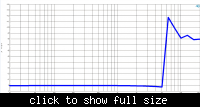ack88
Newbie level 5
Hello,
Thanks in advance for reading.
I am trying to drive a 20uF load with the opamp circuit attached .I have used AD825 op amp.Basically I am giving [Vac + (Vdc/2) ] at non inverting input and getting Vac+Vdc at output.
The output is not stable with this configuration. Do i need to put an transistor output power stage or something else for this?
Thanks
Thanks in advance for reading.
I am trying to drive a 20uF load with the opamp circuit attached .I have used AD825 op amp.Basically I am giving [Vac + (Vdc/2) ] at non inverting input and getting Vac+Vdc at output.
The output is not stable with this configuration. Do i need to put an transistor output power stage or something else for this?
Thanks
